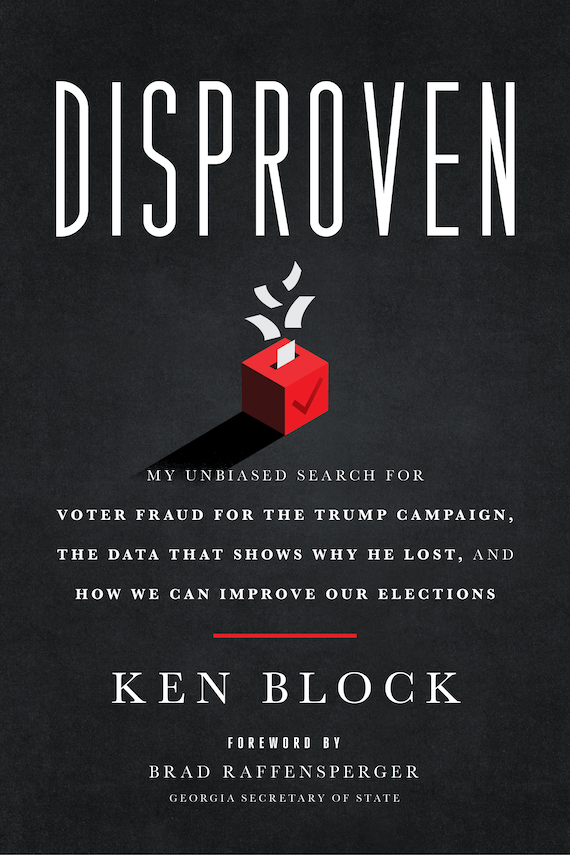Barrington, RI (Special to Informed Comment) – If the oldest human alive is 116, how did 368 118-year-olds vote in New York in 2020?
Election districts that do a terrible job identifying their voters expose their state to problems far beyond a few votes by individuals with impossible ages. Consider that in 2020 New York voters with no personally identifiable information (PII – Social Security or driver’s license numbers) in the voter database cast nearly as many ballots as Joe Biden’s margin of victory over Donald Trump—more than 1.8 million votes.
Before anyone claims this is the smoking gun that proves massive voter fraud, let me assure you that no one has brought forth legally admissible proof of voter fraud sufficient to change any state election result in 2020. And I should know. I was hired by the Trump campaign to look for voter fraud in the days after that election.
These impossibly old voters and voters who lack PII represent sloppy computer systems and reveal a lack of statewide standards for how New York’s counties operate their elections. With birthdates of 1800, 1850, and 1900, those overly-aged New York voters have placeholder dates of birth, put there because election workers didn’t know the actual date. New York election officials should have flagged these voters as problematic, researched them, and either fixed the data or removed them from the rolls. These issues impact the overall integrity (and perception of integrity) of New York’s election systems and interfere with election officials’ ability to maintain the voter rolls properly.
This is a bipartisan issue in New York. Forty-nine percent of all registered voters in the state are Democrats, while about 22 percent are Republicans. When it comes to voters who lack PII, 49 percent are Democrats and 29 percent are Republicans.
The lack of PII carries serious consequences. Not being able to sort the dead from the living via PII and valid birth dates is a monumental problem that leads to bloated voter rolls. Bloated voter rolls artificially lower election turnout percentages, waste the time and money of campaigns trying to reach voters who may no longer exist, and open the door to mischief—or worse.
It also leads to 118-year-old voters. There are obvious problems with this extraordinary bit of longevity and civic duty beyond the fact that the oldest human being still alive is 116. And yet, New York has 3,595 registrants older than 118 years (based on their recorded date of birth). Votes were cast by 269 of these registrants in 2022, and 368 of them voted in 2020. As you might have guessed, 3,474 lack PII.
But the problem is deeper than voting by the immortal elderly. Almost 1.2 million registrants have no votes recorded in the data file and have been registered to vote in New York for at least 20 years. Of these, more than 800,000 do not have PII. Many of these registrants are most likely deceased and fell through the cracks. They should have been purged from the rolls long ago. If they had, New York’s 2020 voter turnout would have improved from roughly 70 to 78 percent. Sadly, this has gone on for so long that election officials cannot uniquely identify these voters without expensive data analytics.
It gets worse. More than 3 million registrants are currently on the rolls without PII, according to data from a 2022 Freedom of Information inquiry. Of those, more than 1.8 million voted in 2020, and 1.4 million voted in 2022. Many of these date from 1989, before the federal law requiring voters to present PII when being registered. Despite the passage of the law requiring PII, New York continues to enroll voters it can’t uniquely identify. The state should backfill the missing PII for as many voters as possible.
Part of the reason for this mess is the lack of having one central state elections hub. Instead, New York’s counties are responsible for administering elections, which leads to chaos when the counties do things differently. In the 2020 election, New York counties identified votes in ten different ways. Inconsistency is the enemy of integrity.
Why is there no statewide standard for recording votes the same way by every county? This is a seemingly simple thing to implement and enforce. One might wonder about other ways New York’s counties administer their elections differently.
To show I bear no ill will towards New York, New Jersey has nearly 25,000 impossibly old voters, almost 8,000 of whom cast votes in 2020.
Our election infrastructure is a mission-critical component of our governance. The data that underpins that infrastructure should be sound. An election system that cannot uniquely identify its registrants as severely as New York’s should be unacceptable to everyone.



 © 2026 All Rights Reserved
© 2026 All Rights Reserved